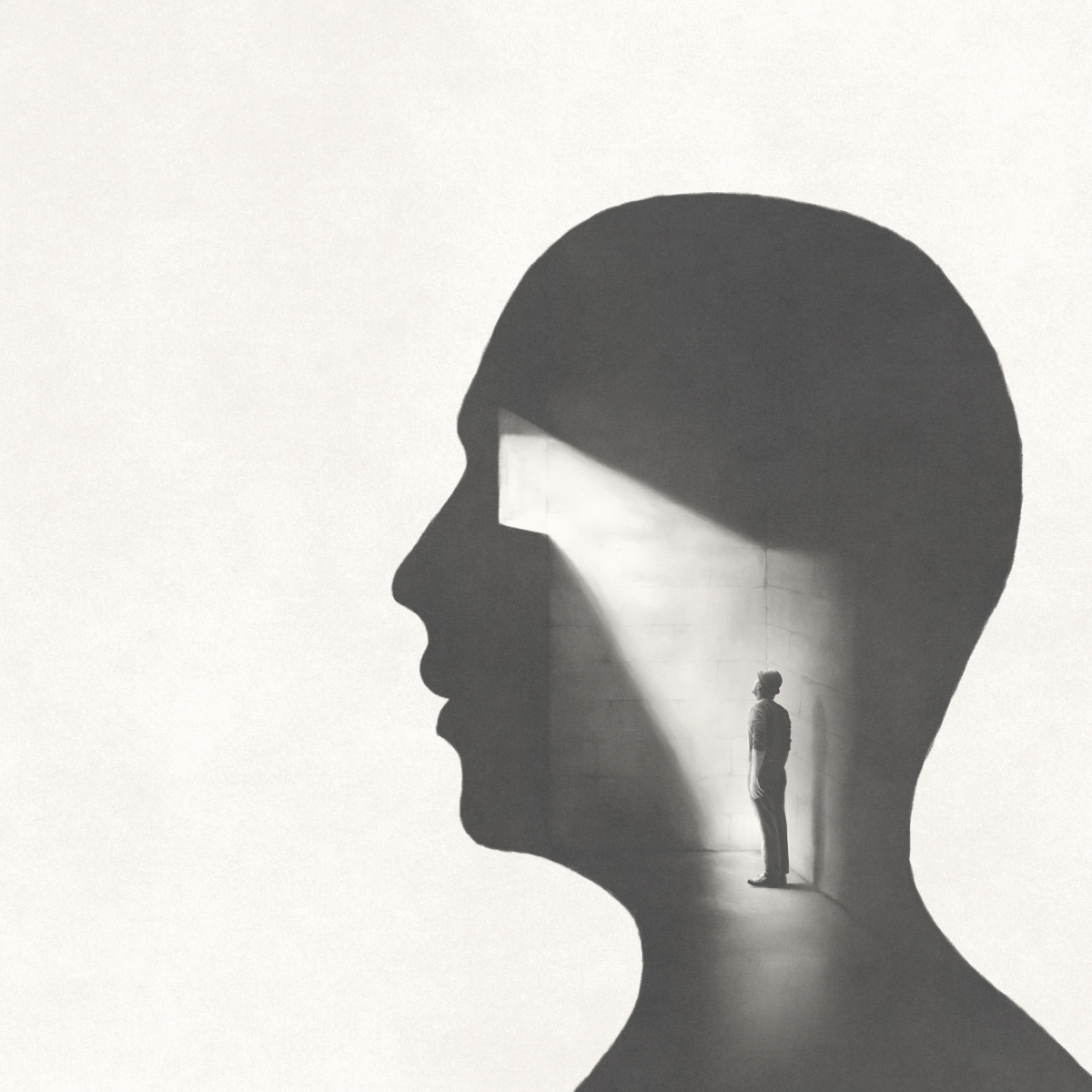What is Autistic Masking?
If you're autistic, you may be familiar with the concept of "masking." Masking is the act of concealing one's true self in an attempt to blend in with those who are neurotypical, or aligned with societal norms. While this strategy can provide temporary relief from feeling out of place or judged, long-term masking often leads to health issues such as burnout, anxiety, and depression.
In this blog post, we will delve into what masking is, its potential impacts on autistic people, and strategies for unmasking. A comprehensive understanding of autistic masking can aid in devising supportive strategies and enhance our collective comprehension of autism's complexities.
Autistic Masking Explained
Autistic individuals often receive feedback throughout their lives implying that their behavior is "different" or "off." This leads many to hide their autism traits to better assimilate into society. This concealment, often unconscious, can come at a high emotional cost.
Autism is often characterized by certain behaviors such as difficulty making eye contact, strong reactions to sensory stimuli, stimming behaviors like rocking, pacing, and speaking in a monotone voice, among other things. Autistic masking entails suppressing these traits in order to appear more neurotypical. For instance, an individual may hide discomfort around loud noises or bright lights or force themselves to maintain eye contact even if it causes discomfort. They might also adhere to social scripts that they know are expected in certain situations.
Primarily, masking is done to fit into the neurotypical world. Many feel the need to conceal aspects of their personality to gain acceptance from others. They may also believe that these traits make them stand out negatively and thus, don’t want to be perceived differently due to their autism.
Everyone masks to some extent to achieve social success. For instance, your behavior in public differs from your behavior in private. However, for autistic individuals, the frequency and intensity of masking can have a detrimental impact on their mental health and wellbeing.
Signs of Masking
Masking can manifest in various ways. An autistic individual may hide personal interests or use scripted conversations or memorized responses to everyday questions. They may also endure intense sensory discomfort, like loud noises or uncomfortable fabrics, in an effort to appear "normal." Other common signs include forced eye contact, mimicking gestures or facial expressions, concealing personal interests, developing rehearsed responses, and hiding stimming behaviors.
Why Does Someone Mask?
Masking is often used as a protective mechanism. Autistic individuals may mask to blend in, secure better employment
In the world of autism, there is a concept known as "masking." This is when an individual with autism intentionally conceals or modifies their natural behaviors, traits or characteristics to blend in with neurotypical peers. It could involve suppressing reactions to sensory stimuli, forcing eye contact, or mimicking social scripts.
The primary motivation behind masking is to integrate with the neurotypical world. Many individuals with autism may feel the need to hide aspects of their identity to gain acceptance or to avoid being perceived negatively due to their condition.
While everyone masks their behavior to some extent in different social situations, the frequency and intensity of masking among autistic individuals can lead to mental health issues. For example, constantly suppressing natural traits to fit into a workplace culture can result in exhaustion and a feeling of disconnect from one's true self
When you are out in public, you behave very differently than when you are in private. And when you are at the library, you behave differently than if you are at a social gathering. When taking a class, you may be bored but try to appear more engaged than you are to curry favor with the teacher to improve your grade.
While these may seem like harmless coping strategies, the reality is that the frequency and depth with which autistic people feel the need to mask can take a toll on their mental health and well-being.
For example, when starting a new job, it’s good to observe the company culture and see what behavior is okay and not okay. Working to fit into the company culture contributes to success.
However, if the way you naturally behave and relate to people is discouraged or outright rejected, working to fit in all day long can cause exhaustion from constantly trying to hide your true self and appear “normal” around others.
If regular team lunches are expected, and you need that time to recharge your social batteries, the cost of not participating can be high. It can result in marginalization, lack of promotion, and even job loss.
Not only that, but if someone masks for long periods of time, they may lose touch with who they really are, acting their way through life.
What Are Common Signs of Masking?
Autistic individuals often engage in masking as a means of social survival. Masking involves hiding or downplaying their personal interests and using scripted conversations or memorized responses to navigate everyday interactions. In their efforts to appear "normal," they may push through intense sensory discomfort, such as loud noises or uncomfortable fabrics.
Some common signs of masking include forcing eye contact, mimicking gestures or facial expressions, concealing personal interests to avoid being seen as "weird," developing rehearsed responses to common questions, and covering up stimming behaviors. There are also hidden forms of masking that others may not notice, such as substituting less obvious movements for specific stimming behaviors or enduring uncomfortable sensory situations.
It's important to remember that each person's experience with masking is unique, and how they interpret and react to it will vary. Understanding and acknowledging the challenges of masking can help create a more inclusive and supportive environment for autistic individuals.
Why Do People Mask their Autism?
There are several reasons why autistic individuals may engage in masking. Some of the common motivations include:
FITTING IN AND SOCIAL ACCEPTANCE
Many autistic people mask their behaviors to blend in with neurotypical individuals and be accepted by society. They may feel pressure to conform to social expectations and hide their autistic traits in order to avoid stigma or bullying.
EMPLOYMENT AND QUALIFICATIONS
Masking can be seen as a way to enhance employment opportunities and qualifications. In some cases, autistic individuals may feel the need to downplay their autistic traits in order to be considered for certain jobs or educational opportunities.
RELATIONSHIPS WITH OTHERS
Masking can also be a way to improve relationships with others. Autistic individuals may mimic social behaviors, gestures, or facial expressions to establish connections and be better understood by neurotypical individuals.
PROTECTION AND SAFETY
Masking can serve as a means of protection from potential harm or discrimination. By appearing less visibly autistic, individuals may feel safer in social settings and avoid negative experiences or mistreatment.
Negative Impacts of Masking
While masking can provide short-term benefits, it can also have negative long-term effects on autistic individuals. Some of these impacts include:
EXHAUSTION AND FATIGUE
Masking often requires significant effort and energy, leading to feelings of exhaustion and fatigue. Constantly suppressing autistic traits and trying to fit in can be mentally and physically draining.
ALTERED SENSE OF SELF-IDENTITY
Masking can lead to a distorted sense of self-identity, as individuals may feel like they are hiding their true selves or putting on a persona to be accepted by others. This can result in feelings of self-loathing or a loss of authenticity.
STRESS, ANXIETY, AND DEPRESSIon
The constant pressure to mask and meet societal expectations can contribute to increased stress, anxiety, and even depression among autistic individuals. The fear of being "found out" or not being accepted can take a toll on their mental well-being.
BURNOUT AND DELAYED DIAGNOSIS
Long-term masking can lead to burnout, where individuals experience extreme exhaustion and struggle to cope with daily life. Additionally, masking may delay the recognition and diagnosis of autism, as individuals may become adept at hiding their autistic traits.
Strategies for Unmasking
If an autistic individual feels ready to unmask and embrace their true selves, there are several strategies they can consider:
EDUCATE YOURSELF AND OTHERS
Learn about autism, your own experiences, and those of others. Understanding the reasons behind masking and its potential harm can help with breaking out of the pattern. Educate those around you about autism to promote understanding and acceptance.
EMBRACE YOUR UNIQUENESS
Celebrate and embrace the things that make you different. Recognize that being different is not a negative thing and that your uniqueness is what makes you special.
SEEK SUPPORT SYSTEMS
Find people who understand and support you. Surround yourself with individuals who can provide encouragement and guidance in staying true to yourself.
ADDRESSING SHAME
Challenge feelings of shame associated with being autistic. Focus on building self-esteem, practicing positive affirmations, and engaging in activities that make you feel good about yourself.
CREATE AN ACCOMMODATING ENVIRONMENT
Organize your home or workspace in a way that suits your needs and reduces the need for masking. Create an environment where you can be yourself without feeling ashamed or embarrassed.
ENJOY YOUR PASSIONS
Give yourself permission to indulge in your passions without fear or shame. Enjoying what brings you joy can help reduce the need for masking.
IDENTIFY YOUR VALUES
Determine what matters most to you in life and make sure your actions align with your values. This can give you a sense of purpose and direction, making it easier to express yourself authentically.
CLEAR COMMUNICATION
Communicate your needs as clearly as possible, but also be understanding of miscommunications. Practice active listening and create a safe space for open and honest dialogue.
PRACTICE SELF-CARE
Prioritize self-care to reduce stress levels and maintain mental well-being. Engage in activities that calm your nervous system and take time for yourself every day.
Breaking the cycle of masking is a personal journey, and each individual will find their own path. It's important to remember that unmasking is a process that takes time and self-compassion.
Final Thoughts
Autistic masking is an unconscious act that many autistic individuals do in order to conceal their true selves from the rest of the world. Masking may seem like a good idea at first glance, as it allows an individual to blend in more easily. There are, however, often serious consequences for those who do so for extended periods of time, such as exhaustion and difficulty accessing parts of themselves again later down the road. If you find yourself masking, don't be ashamed. There's nothing wrong with you just the way you are. When you deeply understand and learn to accept yourself, you can begin to ask others to accommodate what YOU need to minimize the need to mask. Learning to accept yourself for who you are is a process, and once you build a community of people who both understand and accept you, this is when you can really thrive in life.







